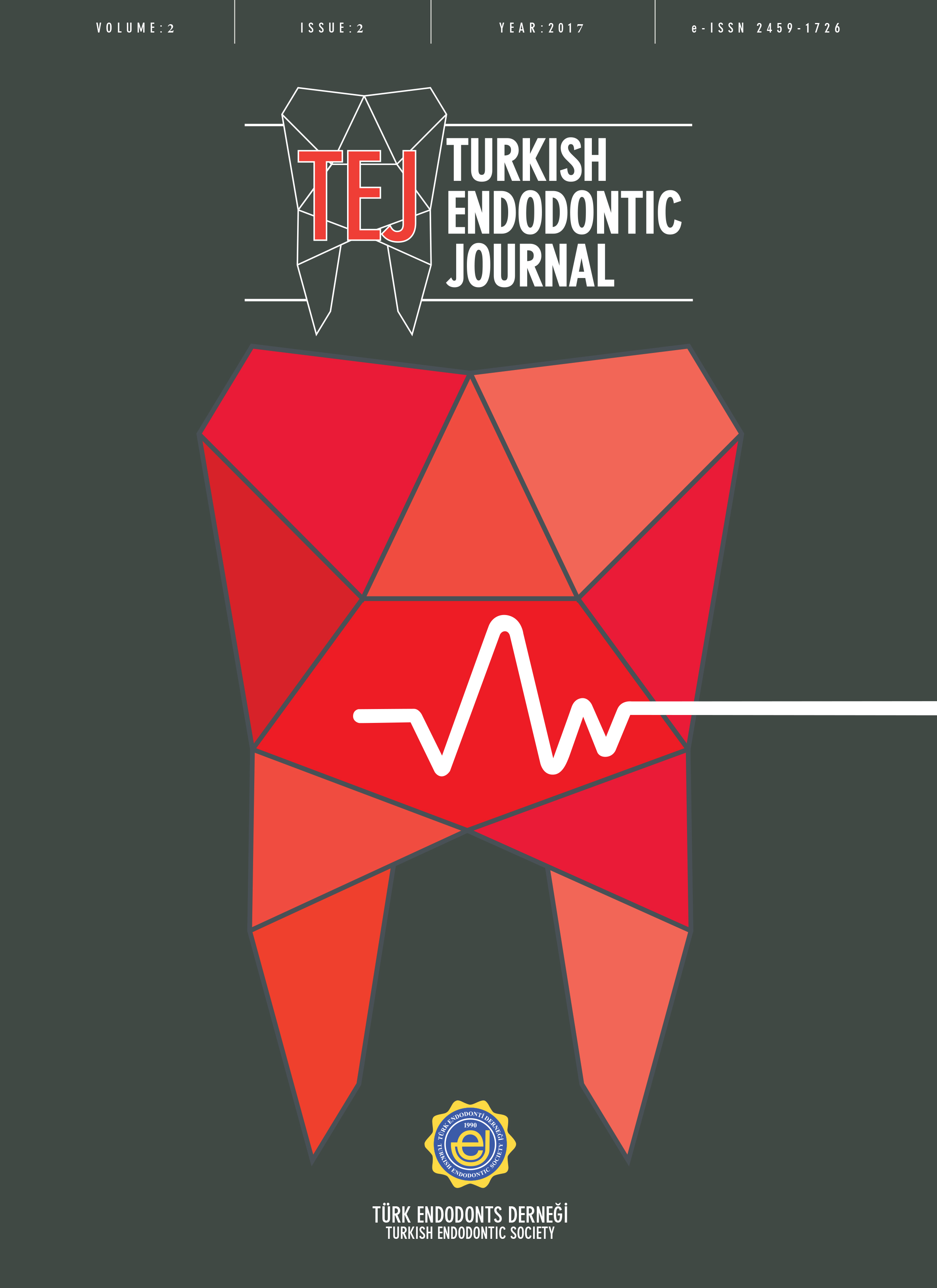Comparison of cyclic fatigue resistance and shaping ability between two single-file reciprocating systems in curved canals
Ezgi Doğanay Yıldız1, Hakan Arslan2, Meltem Sümbüllü2, Mine Büker2, İbrahim Şevki Bayrakdar3, Ertuğrul Karataş2, Muhammet Akif Sümbüllü41Department of Endodontics, Kırıkkale University, Faculty of Dentistry, Kırıkkale, Turkey2Department of Endodontics, Atatürk University Faculty of Dentistry, Erzurum, Turkey
3Department of Oral Diagnosis and Radiology, Osmangazi University Faculty of Dentistry, Eskişehir, Turkey
4Department of Oral Diagnosis and Radiology, Atatürk University Faculty of Dentistry, Erzurum, Turkey
Objective: To evaluate cyclic fatigue resistance in simulated canals as well as transportation, centering ability, and preparation time of two single-file reciprocating systems in curved canals of mandibular molars.
Methods: Reciproc and NIC instruments (size 25) were tested in steel canals with 3 mm radius and 60° angle of curvature (n=20). The time to fracture was recorded in seconds. For the second part, 20 mesial root canals of mandibular first molars with curvature angles of 35°–70° and radii of 2–6 mm were instrumented using NIC and Reciproc instruments. Cone-beam computed tomography scanning was performed both pre- and post-instrumentation. Root canal transportation and the centering ratio were calculated, and the data were analyzed using independent sample t test (p=.05).
Results: No significant differences were found between Reciproc and NIC instruments in terms of cyclic fatigue (p>.05). At 3, 5, and 7 mm levels, there was no significant difference in the root canal transportation and centering ratio between the groups (p>.05).
Conclusion: Within the limitations of this study, cyclic fatigue values the root canal transportation and centering ratio of the NIC was similar to that produced with the Reciproc.
Keywords: Centering ability, cyclic fatigue, reciprocation, root canal instrumentation, transportation.
İki farklı tek eğe resiprokasyon sisteminin döngüsel yorgunluk direncinin ve kurvatürlü kanallarda şekillendirme yeteneğinin kıyaslanması
Ezgi Doğanay Yıldız1, Hakan Arslan2, Meltem Sümbüllü2, Mine Büker2, İbrahim Şevki Bayrakdar3, Ertuğrul Karataş2, Muhammet Akif Sümbüllü41Endodonti Anabilim Dalı, Diş Hekimliği Fakültesi, Atatürk Üniversitesi, Erzurum, Türkiye2Oral diagnoz ve Radyoloji Anabilim Dalı, Diş Hekimliği Fakültesi, Osmangazi Üniversitesi, Eskişehir, Türkiye
3Oral diagnoz ve Radyoloji Anabilim Dalı, Diş Hekimliği Fakültesi, Atatürk Üniversitesi, Erzurum, Türkiye
4Department of Oral Diagnosis and Radiology, Atatürk University Faculty of Dentistry, Erzurum, Turkey
Amaç: İki farklı tek eğe resiproksayon sisteminin simüle kanallarda döngüsel yorgunluk direncinin, aynı zamanda mandibular molarların kurvatürlü kanallarında transportasyonun, merkezde kalma yeteneğinin ve preparasyon zamanının değerlendirilmesidir.
Yöntemler: Reciproc ve NIC aletler (25 numara) 3 mm yarıçapında ve 60° açılı kurvatüre sahip çelik kanallarda test edildi (n=20). Fraktür zamanı saniye olarak kaydedildi. İkinci aşama için, 35-70° kuravatür açılı ve 2-6 mm yarıçaplı yirmi mandibular birinci moların mesial kanalları NIC ve Reciproc aletler kullanılarak prepare edildi. Konik ışınlı bilgisayarlı tomografi taraması preparasyon öncesi ve sonrasında alındı. Kök kanal transportasyonu ve merkezde kalma hesaplandı, ve veriler bağımsız örneklemlerde t testi kullanılarak analiz edildi (P=.05)
Bulgular: Reciproc ve NIC aletleri arasında döngüsel yorgunluk açısından istatistiksel farklılık bulunmamıştır (P >.05). 3, 5 ve 7 mm seviyelerinde, kök kanal transportasyonu ve merkezde kalma oranı açısından gruplar arasında istatistiksel farklılık yoktu (P >.05).
Sonuçlar: Bu çalışmanın sınırları dahilinde, NIC aletlerin döngüsel yorgunluk değerleri, kök kanal transportasyonu ve merkezde kalma oranı Reciproc aletlere benzer olarak üretilmiştir.
Anahtar Kelimeler: merkezde kalma yeteneği, döngüsel yorgunluk, resiprokasyon, kök kanal genişletilmesi, transportasyon
Manuscript Language: English



















